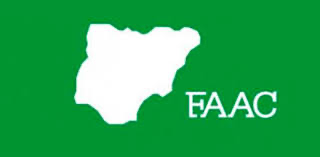ABUJA — The Federation Account Allocation Committee (FAAC) has disclosed that the Federal Government, 36 states, and 774 local government councils shared a total sum of ₦1.681 trillion as distributable revenue for April 2025. This allocation was drawn from a gross total of ₦2.848 trillion generated during the month.
The announcement was made after the monthly FAAC meeting held in Abuja, chaired by the Minister of Finance and Coordinating Minister of the Economy, Wale Edun. The meeting reviewed revenue inflows from various sources, including oil sales, taxes, and statutory allocations, before the disbursement.
A breakdown of the distribution shows that the Federal Government received ₦494.689 billion, the states got ₦418.738 billion, while the local government councils shared ₦313.576 billion. In addition, ₦454.808 billion was disbursed to oil-producing states as 13% derivation revenue.
The increase in the distributable amount is attributed to higher receipts from petroleum profit tax, company income tax, value-added tax, import and excise duties, and oil royalties, according to a statement released by the Office of the Accountant General of the Federation.
Also reported was an augmentation of ₦200 billion to stabilize the monthly allocation due to revenue volatility. The Excess Crude Account (ECA) balance was left unchanged, standing at approximately $473,754.
Despite the steady revenue growth, economic experts warn that rising inflation, debt servicing costs, and fiscal pressures at sub-national levels continue to pose challenges to fiscal sustainability. However, the government insists that reforms under the Tinubu administration — including subsidy removal, tax reforms, and efforts to block leakages — are gradually yielding results.
This latest disbursement marks one of the highest in recent years and is expected to aid states and local councils in meeting pressing obligations, including salary payments, social welfare programs, and critical infrastructure projects.
4o

